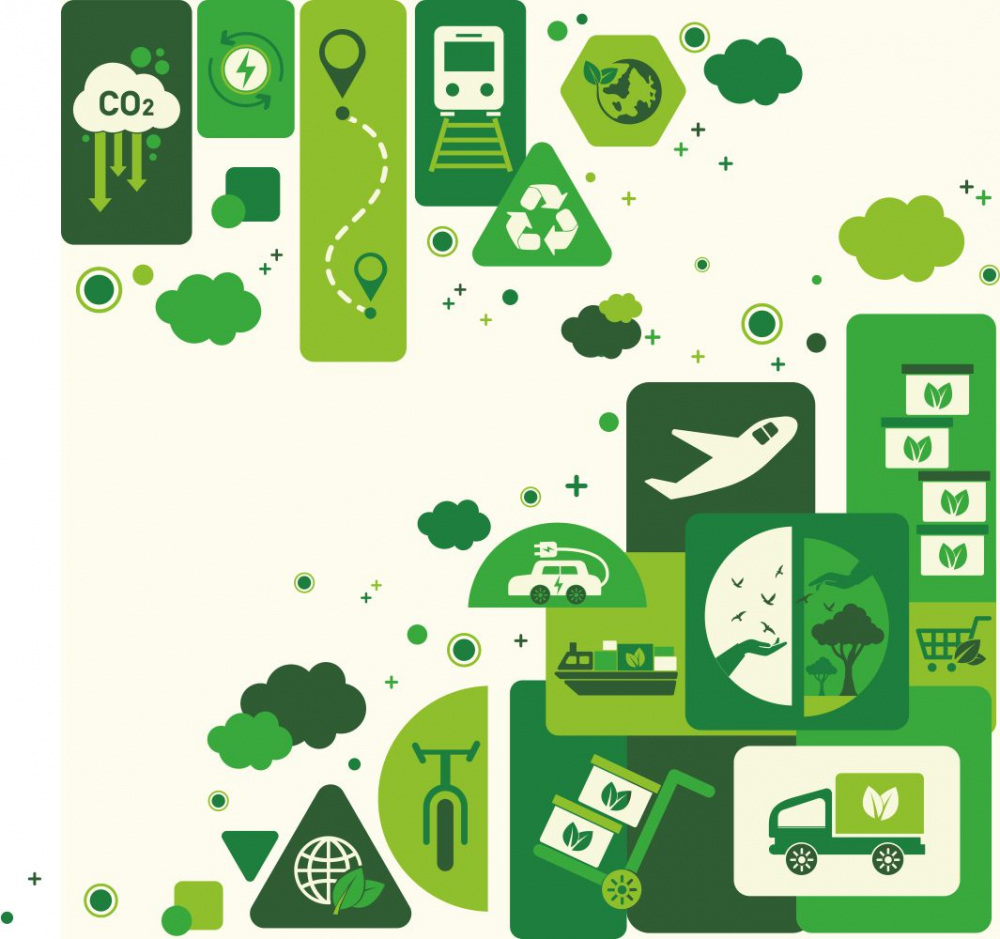MR. PRABODHA ACHARYA, CHIEF SUSTAINABILITY OFFICER, JSW
The Chief Sustainability Officer (CSO) role is becoming increasingly crucial. In order to put ESG at the heart of value creation, how does a CSO and other C Suite leaders collaborate? Which are the top 2-3 elements that they must address?
I think today it's very clear that sustainability is a crisis of our generation and in fact, I am not really worried about sustainability of the mother Earth. I am worried about the sustainability of the business and sustainability of human race because that's the biggest concern in front of us as to how do we run the business in the right way so that we can build a sustainable world where humans can thrive and lead so that sustainable business can thrive. Therefore, it is not possible to live sustainably if we erode and deplete our capitals whether it is economic capital, social capital or environmental capital and that is where, in a business context, specifically for a Group like JSW, the role of CSO is becoming crucial. In my view, the CSO is emerging as the organisation's ‘Sense Maker in Chief’ as he makes a sense out of what's happening outside the business that can impact your business activities and ultimately guides the organisation to create a meaningful impact on the outside world.
The important aspects that a CSO must address starts with understanding the impact of the business on the external environment and bringing insights back into the organisations. He needs to direct the team in making the desired process changes and strategic changes to meet the objective. World Economic Forum, since the last five years, has been repeatedly informing that climate change inaction is going to be the topmost business risk. Top three are environmental related risk and out of top 10, almost all are sustainability related risks. Making changes into your long-term business strategy is very important and that is where CSO has an important role to play in influencing the decisions of the future including the present but more on the strategy side so that the organisation can reconfigure its business strategy.
The third and the most important aspect that a CSO must address is providing a thought leadership and help align teams by engaging, educating and connecting them under one roof to help them gauge its impact on the business. We all know that in business nothing moves faster if it is not related to the finances, therefore it is very important that your CFO is aligned and that is where I see, as a CSO, I have seen that bringing in sustainability-linked finances to the organisations really brings tangible gains. Through this, the organisation actually commits to do better in their sustainability performance and therefore they attract finances at a cheaper rate. Every organisation needs finances for their growth. Now there are various means to raise those finances but if your ESG performance is better, then you attract finances easily. There are the instruments like green bonds, sustainability-linked bond, Social-linked Bond, which help companies to tread along the eco-conscious pathways. When you commit those targets with your financial performances, then you will be in the right track. As a CSO, I'll be happy to do that because that ensures me the entire organisation will align to achieve the sustainable targets and the buy-off becomes easy.
Then comes the crucial role of Chief Marketing Officers (CMOs) where the CSO has to work with them to design new products & services which is eco-friendly and that is where this CSO get engaged with marketing and salespeople. Coming to digitisation, it is very important that digitisation drives the changes in the organisation and that is where possibly CSOs need to make that thought process changes. If you look at the CTOs or the R&D heads, it is a very important role for CSOs to influence the new technologies specifically in the manufacturing sector. In that sense, I can tell you that CSO has been touched upon each and every function of the organisation to drive these changes, in which a business can thrive going forward.
We would like to know any specific sustainable supply chain initiative undertaken by JSW…
First of all, let me mention it very clearly that supply chain needs to be sustainable to build a sustainable business because if you don't have both – Downstream and Upstream supply chain – your business will get affected. The fundamentals require organisations to work with supplier who are able to supply the quality of materials that you need in time so that you can run your business, but that is not good enough, only looking at quality cost available just in time, it's not really good enough. We must ensure that we address those sustainability issues, which could impact our businesses in the long run. In this regard, at JSW, we have developed Supplier Code of Conduct that every supplier needs to adhere to. These codes of conduct are based on all the available international standards.
We ensure that any supplier who wants to do business with JSW, has to first sign that code of conduct document and promise to meet all those requirements. The reason for this is that I always believe that if you don't get things in written, it will never be never get implemented. So the first step is to get it in writing. Once that happens, we ask suppliers to conduct self-assessment and then it has to be audited. Every business remains sustainable when you have a positive bottom line, the question is – how do you get to that bottom line?
Moreover, it is imperative that the carbon footprint is looked at from the Cradle to Grave angle. In the process, we look at our carbon emissions during the mining stage, the transportation stage, material handling stage, so on and so forth. We work collaboratively with the big supplier because many-a-times, we are responsible for more emissions than they are.
How do you monitor and control that your suppliers deliver on what they sign for?
Let me very honest with you as I had mentioned earlier, you have to get things in writing, but then you have to have a monitoring mechanism in place to ensure that what has been signed for gets delivered and that is there the gap lies. Therefore, we must have a system for supply chain management and assessment in place to continuously monitor their performance on the sustainability parameters. To ensure that we achieve our sustainability target, not only we have given a policy statement, but we have also provided our suppliers with the necessary documentation that help them in this journey. We have developed an internal standard and as part of that standard, in the first phase, we ask our supplier to self-comply against the requirement and then selectively if somebody is telling they have a high level of conformance, we'll go back and get it vetted by external auditor or by internal auditor. This process is still at an infancy, we have not yet matured in the process.
We are looking at designing the system right and start this process. We have some time to achieve this objective.
Steel is recyclable, durable and requires relatively less energy to produce. This industry has made immense efforts to limit environmental pollution. With your rich experience in this industry, can you talk about circularity of value chain of this industry?
To start with, let me correct the statement… Steel industry is not a low energy industry, in fact, it is an energy intensive process. We really consume lot of energy and therefore we are also responsible for a lot of GHG emissions and therefore our focus now has been to figure out the possible ways to reduce our energy consumptions and the GHG emissions and circularity is one of the biggest levers in promoting reductions in GHG emissions and energy consumptions.
There are two things worth mentioning when we talk about circularity. Steel is a 100% recyclable material, entailing the first steel made by the mankind is still in use and the recyclability of the steel is the largest of any material. It can be recycled infinite times, that's the circularity of the material itself. Another important point to highlight the steel industry’s efforts in supporting the circular economy. To make one ton of steel, you require almost four ton of materials. The question is what happens to the rest three tons?
I believe steel industries is probably the first industry, which supports circular economy in totality and utilises or reuses all the by-products whether it is a gas coming out of production cycle, or solid wastes or liquid effluents. All the gases, which come out, become an energy source, and support the energy transition and energy industry. All the dust coming out of the chimneys, gets captured and put into agglomeration and doubles us as a raw material. The waste material coming out from the iron making or steel making process, serves as an excellent input material for cement making. Similarly, all the slag, which is coming from this steel melting processes, gets converted into sand and with that, we are doing soil conditioning. We are also doing palletisation.
The Indian steel industry, in recent decades, has shown phenomenal growth. JSW Steel Limited is one of the fastest growing steel plants in India and has adopted the best practices and technologies available to mitigate the adverse environmental impact. The increasing use of plastics, its sustainable reuse and recycling, has become a serious environmental challenge. The company’s in-house pilot scale trials confirmed the sustainability of using plastics in electric arc furnace as a partial replacement of coke fines. EAF utilizes Coke fines to increase the foaming behaviour of its slag for stable arcing and reduced arcing time.
A new technology to recycle Plastics in electric Arc furnace as a foaming agent has been developed and implemented by JSW Steel. This process helps in reducing approximately 1000 tons of carbon dioxide emissions annually due to reduced coke fines usage in addition to the reduction in usage of carbon bearing materials. The project also resulted in annual cost savings of Rs1.97 million.
This is an excellent example where the wastes are becoming enablers in reducing the cost and also reducing one of the important GHG emissions. Now we are extending that and working on how we can use in other processes like iron making and coke making. With all these measures, we are increasingly integrating circularity into all our policies and strategies when we talk about sustainability strategy or ESG strategy.
Are there any processes, which are outside of JSW and how do you manage them?
If you look at plastics itself, the generation of plastic is not within JSW. We have to develop a proper supply chain to ensure that it is available at the right quality and quantity so that it can be used efficiently. That itself is a challenge and that is where our foundation is working on that supply chain and that supply chain actually involves improving the social aspect, the economic conditions of the people who are used to collect those plastics. It is a holistic sustainability issue management and not only reducing carbon emissions. We are also looking at improving the quality of the people involved in the supply chain and we all know that plastic collection in India is normally handled by rack pickers who belong to low-income strata, and we are aiming to work holistically in the supply chain.
Measuring scope 3 emissions is very difficult since most activities happen outside of an organisation. What kind of ecosystem or infra an organisation requires in order to accurately manage / control scope 3 emissions?
From the industry practitioner point of view, we do not monitor Scope 3 emissions. In fact, we don't monitor any GHG emission, rather we calculate GHG emissions. There are two processes that the industry normally uses – Activity data multiplied with emission Factor. Most people use factor, which is international average, and you can take estimate of your activity data in scope 3, particularly it is a challenge when you do not have sector specific or national or industry specific emission factors established, then you go to a higher level of international emission factor, which is very average. The level of uncertainty in calculating Score 3 is very high.
There are many sustainability standards GRI ISB IFC CDP. Is there a feasibility of one or two common standards within your industry and outside?
ISSB is standardising the process but when you look at the international standards, all standards are not addressing the same issues. Some are reporting standards like GRI and many of the organisations are following and making that as a base such as Business Responsibility and Sustainability Reporting (BRSR), which is based on NGRBC (National Guidelines for Responsible Business Conduct), which in India, is a reporting requirement, but there are some strategic standards like Task Force on Climate-Related Financial Disclosures (TCFD), a strategic standard that helps to build your strategy to climate change management and also helps you reporting climate change related risk and opportunity. Corporate Accounting and Reporting Standard will be more helpful for Balancing Act for accountability as well as the reporting standard. I am of the firm belief that there is a need for unification and standardisations in the aspect. We should think of having one reporting standard instead of multiple reporting standards.
Are there any new technological driven approaches available like (for example) to reduce use of Carbon and replace it with Hydrogen, which will generate water instead of CO2?
The maximum amount of greenhouse gas is coming from energy sector, but I think massive work is happening on the energy transition. The renewable energy is a different form, which is coming in a tremendous way and is also proving to be cost effective. At one point, I think, to decarbonise the entire world, we should start electrifying everything and that will be possibly easier solutions and cost effective solution, but there are a lot of promising technologies such as green hydrogen, which is going to be a phenomenal change and I believe the Government of India has taken right steps and specifically from a steel industry perspective, green hydrogen is going to play a very important role, but we are yet to see when it will become cost-effective for the adoption.
A lot of clean technology has emerged in the last few years, and I am witnessing maximum numbers of such impressive solutions coming from India. There are interesting solutions whether it is a biodegradable plastic, energy storage, making water out of the atmosphere, and the list goes on. I'm pretty hopeful that the younger generation is serious about it, and they will move this technology in a very faster rate than we can anticipate. Of course, we must all try to limit our temperature rise to 1.5 degree, but I think we should be able to, at least, be within 2 degrees.
Introduction to Integrating ESG in the next phase of business growth

Categories

Magazine Editions






















